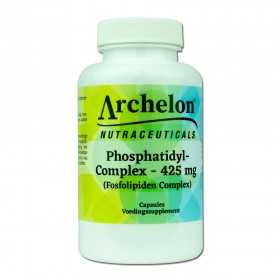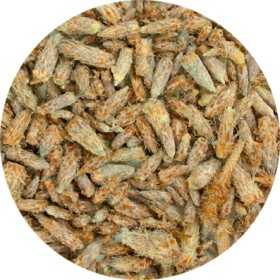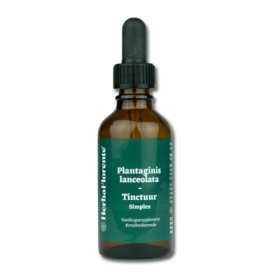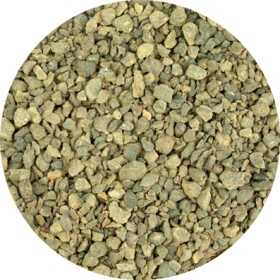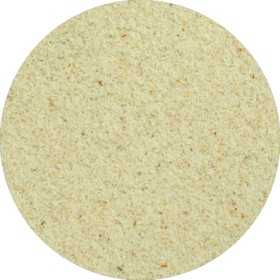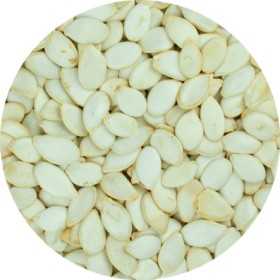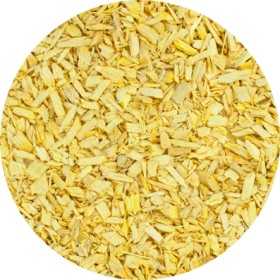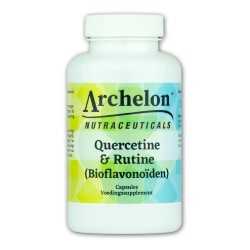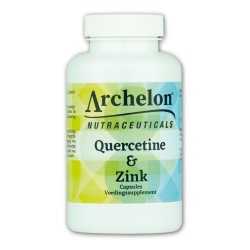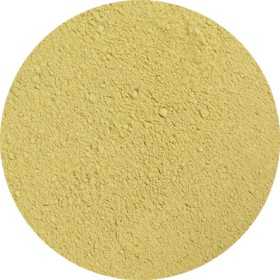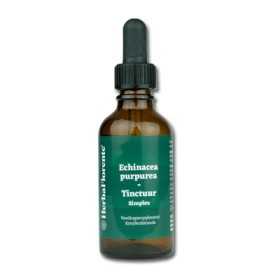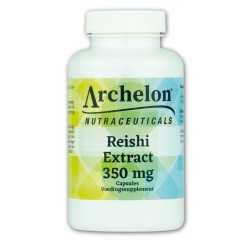Health Goals
There are 391 products.
Peppermint Tincture - Menthae piperita Tincture
Single herbal tincture made with dried herb of Menthae piperita (Peppermint).
Peppermint oil (Mentha piperita) is often taken to support digestion. Peppermint is a member of the Lamiaceae family and is used for making peppermint candy.
In herbal medicine, peppermint has a long history dating back to ancient Greece. There, the fragrant peppermint leaf was traditionally used to aid digestion. Peppermint contains several essential oils, including menthol, menthone and cineole.
Peppermint oil (Mentha piperita) is often taken to support digestion. Peppermint is a member of the Lamiaceae family and is used for making peppermint candy.
In herbal medicine, peppermint has a long history dating back to ancient Greece. There, the fragrant peppermint leaf was traditionally used to aid digestion. Peppermint contains several essential oils, including menthol, menthone and cineole.
€11.95
Phosphatidyl - Complex (Phospholipid Complex) - 425 mg
Last items in stock
Phosphatidyl-Complex (Phospholipid Complex) contains a combination of phospholipids, including Phosphatidylserine, Phosphatidylcholine, Phosphatidylethanolamine and Phosphatidylinositol.
Phospholipids are essential building blocks of cell membranes. They consist of glycerol, fatty acids and a phosphate group linked to an amino acid (such as serine), an amine or an amino alcohol. This creates a head that is water soluble and a tail that is fat soluble.
The group of phospholipids includes phosphatidylcholine and phosphatidylserine. Phosphatidylserine has a special position within this group, because - in healthy cells - it occurs exclusively on the inside of cell membranes. This is due to the specific role of phosphatidylserine.
Phospholipids are essential building blocks of cell membranes. They consist of glycerol, fatty acids and a phosphate group linked to an amino acid (such as serine), an amine or an amino alcohol. This creates a head that is water soluble and a tail that is fat soluble.
The group of phospholipids includes phosphatidylcholine and phosphatidylserine. Phosphatidylserine has a special position within this group, because - in healthy cells - it occurs exclusively on the inside of cell membranes. This is due to the specific role of phosphatidylserine.
€49.95
Phosphatidylcholine - 450 mg
Phosphatidylcholine is a concentrated form of lecithin, but is much more potent and has a longer shelf life than lecithin alone.
Phosphatidylcholine, derived from lecithin, is a source of choline, an essential nutrient recently recognized as a vitamin by the Dutch Health Council. Previously, choline was often referred to as vitamin B8, but it was not officially recognized as such.
It is an important component of cell membranes and plays a role as a pulmonary surfactant, mainly found in the outer leaflet of cell membranes.
Phosphatidylcholine is thought to be transported between cell membranes by the phosphatidylcholine transfer protein (PCTP).
Phosphatidylcholine, derived from lecithin, is a source of choline, an essential nutrient recently recognized as a vitamin by the Dutch Health Council. Previously, choline was often referred to as vitamin B8, but it was not officially recognized as such.
It is an important component of cell membranes and plays a role as a pulmonary surfactant, mainly found in the outer leaflet of cell membranes.
Phosphatidylcholine is thought to be transported between cell membranes by the phosphatidylcholine transfer protein (PCTP).
€39.95
Pine (Needles) - Pinus silvestris
The Scots pine (Pinus sylvestris) belongs to the pine family (Pinaceae) and can reach a respectable age of 200 to 300 years, thanks to its rich resin content.
In phytotherapy, the needles and buds of the Scots pine are used because of their content of tannins, flavonoids and vitamins. The oleoresin of this tree is rich in turpentine. This species is known for its abundant monoterpenes, such as α-pinene, β-pinene and limonene, which form an essential oil with expectorant, antiseptic, decongestant, venolymphatic and anti-inflammatory properties.
In phytotherapy, the needles and buds of the Scots pine are used because of their content of tannins, flavonoids and vitamins. The oleoresin of this tree is rich in turpentine. This species is known for its abundant monoterpenes, such as α-pinene, β-pinene and limonene, which form an essential oil with expectorant, antiseptic, decongestant, venolymphatic and anti-inflammatory properties.
€2.00
From: €2.00
Pine (Seedlings) - Pinus silvestris
The Scots pine (Pinus sylvestris) belongs to the pine family (Pinaceae) and can reach a respectable age of 200 to 300 years, thanks to its rich resin content.
In phytotherapy, the needles and buds of the Scots pine are used because of their content of tannins, flavonoids and vitamins. The oleoresin of this tree is rich in turpentine. This species is known for its abundant monoterpenes, such as α-pinene, β-pinene and limonene, which form an essential oil with expectorant, antiseptic, decongestant, venolymphatic and anti-inflammatory properties.
In phytotherapy, the needles and buds of the Scots pine are used because of their content of tannins, flavonoids and vitamins. The oleoresin of this tree is rich in turpentine. This species is known for its abundant monoterpenes, such as α-pinene, β-pinene and limonene, which form an essential oil with expectorant, antiseptic, decongestant, venolymphatic and anti-inflammatory properties.
€2.80
From: €2.80
Pine Tincture - Pinus silvestris Tincture
Single herbal tincture made with dried needle of Pinus silvestris (Pine).
The Scots pine (Pinus sylvestris) belongs to the pine family (Pinaceae) and can reach a respectable age of 200 to 300 years, thanks to its rich resin content.
In phytotherapy, the needles and buds of the Scots pine are used because of their content of tannins, flavonoids and vitamins. The oleoresin of this tree is rich in turpentine. This species is known for its abundant monoterpenes, such as α-pinene, β-pinene and limonene, which form an essential oil with expectorant, antiseptic, decongestant, venolymphatic and anti-inflammatory properties.
The Scots pine (Pinus sylvestris) belongs to the pine family (Pinaceae) and can reach a respectable age of 200 to 300 years, thanks to its rich resin content.
In phytotherapy, the needles and buds of the Scots pine are used because of their content of tannins, flavonoids and vitamins. The oleoresin of this tree is rich in turpentine. This species is known for its abundant monoterpenes, such as α-pinene, β-pinene and limonene, which form an essential oil with expectorant, antiseptic, decongestant, venolymphatic and anti-inflammatory properties.
€9.95
Plantain Broadleaf - Plantaginis major
The Plantain Broadleaf (Plantago major) is a plant belonging to the plantain family (Plantaginaceae) and varies in size from 10 to 50 cm. It forms a dense leaf rosette that is resistant to foot traffic, which is why it is often considered a weed. This plant species is common in gardens, along roads and paths, and is sometimes derisively called the "white man's footprint". Nevertheless, there is a cultivated variety known as Plantago major 'Rosularis'.
€2.00
From: €2.00
Plantain Narrow Tincture - Plantago lanceolata Tincture
Single herbal tincture made with dried herb of Plantaginis (Plantago) lanceolata (Plantain Narrow).
Narrow plantain (Plantago lanceolata) is a native plant that thrives in Europe, parts of Asia, North Africa and North America. The young leaves of this plant contain a rich mix of beneficial substances, including mucilages, tannins, bitter substances, flavonoids and minerals such as potassium and zinc. Best known for its soothing effect on the throat thanks to its mucilages, plantain also provides support for the immune system and promotes normal intestinal function. In addition, it can help maintain flexible joints and is beneficial for the liver.
Narrow plantain (Plantago lanceolata) is a native plant that thrives in Europe, parts of Asia, North Africa and North America. The young leaves of this plant contain a rich mix of beneficial substances, including mucilages, tannins, bitter substances, flavonoids and minerals such as potassium and zinc. Best known for its soothing effect on the throat thanks to its mucilages, plantain also provides support for the immune system and promotes normal intestinal function. In addition, it can help maintain flexible joints and is beneficial for the liver.
€9.95
Power Berries+ Formula
Our Power Berries+ Formula provides a balanced blend of nutrients specially formulated to support your overall health. This unique formula is packed with healthy fiber and essential nutrients, including polyphenols, phytonutrients, antioxidants and natural vitamins.
€57.50
Power Veggies+ Formula
Our Power Veggies+ Formula provides a balanced blend of essential nutrients to support your overall health. With an abundance of healthy fibers and nutrients, is Power Veggies+ Formula specially formulated to nourish and glow your body.
€59.50
PQQ (Pyrroloquinoline quinone) - 20 mg
PQQ, abbreviated for Pyrroloquinoline quinone, is a substance similar to a B vitamin and mainly found in plants. It is also sometimes called 'super Q10' because of its similar properties. Although PQQ has been around for a long time, it was only recently discovered. This water-soluble substance plays a role in enzymatic reactions and supports enzymes in their function. In addition, PQQ has various other properties.
A lot of research is currently being done into the exact composition and function of PQQ. This substance occurs naturally in various foods, such as spinach, kiwi, soy beans (especially green and fermented soy beans such as nattō), mustard and tofu. Green tea is also a rich source of PQQ.
A lot of research is currently being done into the exact composition and function of PQQ. This substance occurs naturally in various foods, such as spinach, kiwi, soy beans (especially green and fermented soy beans such as nattō), mustard and tofu. Green tea is also a rich source of PQQ.
€42.95
Propolis - Propolis
Propolis, the secret weapon of the bee colony, is used to protect the hive or hive against bacteria and fungi and as 'cement' to close the openings. It is a natural brown-red substance consisting of vegetable resins, beeswax, essential oils and pollen, with traces of vitamins and minerals.
From June onwards, honey bees collect resin from the buds and leaves of trees and herbaceous plants on warm days. They mix this with their saliva and process it with their paws, ultimately creating propolis.
From June onwards, honey bees collect resin from the buds and leaves of trees and herbaceous plants on warm days. They mix this with their saliva and process it with their paws, ultimately creating propolis.
€44.00
From: €44.00
Propolis Tincture - Propolis Tincture
Single tincture made with Propolis.
Propolis, the secret weapon of the bee colony, is used to protect the hive or hive against bacteria and fungi and as 'cement' to close the openings. It is a natural brown-red substance consisting of vegetable resins, beeswax, essential oils and pollen, with traces of vitamins and minerals.
From June onwards, honey bees collect resin from the buds and leaves of trees and herbaceous plants on warm days. They mix this with their saliva and process it with their paws, ultimately creating propolis.
Propolis, the secret weapon of the bee colony, is used to protect the hive or hive against bacteria and fungi and as 'cement' to close the openings. It is a natural brown-red substance consisting of vegetable resins, beeswax, essential oils and pollen, with traces of vitamins and minerals.
From June onwards, honey bees collect resin from the buds and leaves of trees and herbaceous plants on warm days. They mix this with their saliva and process it with their paws, ultimately creating propolis.
€20.95
Psyllium husks (Premium Psyllium Fiber) - Psylli flavum Testa
Psyllium husks, derived from Plantago psyllium, are a blend of partially soluble and fermentable fibers that are much appreciated by people looking to promote their gut health. They are a valuable addition to your daily fiber intake, but it is crucial to drink enough water throughout the day for optimal results.
With more than 80% fiber, psyllium seed consists mainly of 70% soluble and 30% insoluble fiber. Once psyllium comes into contact with water, it forms a gel that can absorb up to ten times its own weight in water. This increases the amount of fluid in the intestines, making stools softer, but don't forget to drink enough water!
With more than 80% fiber, psyllium seed consists mainly of 70% soluble and 30% insoluble fiber. Once psyllium comes into contact with water, it forms a gel that can absorb up to ten times its own weight in water. This increases the amount of fluid in the intestines, making stools softer, but don't forget to drink enough water!
€2.80
From: €2.80
Pumpkin Seeds - Cucurbitae incortis
Pumpkin seeds are rich in nutrients and calories, with a particularly high fat content (especially linoleic acid and oleic acid), protein, dietary fiber and numerous micronutrients. Pumpkin seeds are a common ingredient in Mexican cuisine and are also roasted and served as a snack.
€2.00
From: €2.00
Quassia - Quassiae - Cut
Quassia, known in Surinamese as kwasibita, is the heartwood of the Quassia amara, a plant species from the Quassia genus within the Tree of Heaven family. This South American plant is often planted in the tropics for its use as a remedy for malaria.
Quassia amara is a small, evergreen shrub found in tropical South America, particularly the Guianas, northern Brazil and Venezuela. The plant grows in the understory of the rainforest and its striking red flowers are pollinated by hummingbirds. Because of these beautiful flowers, the plant is also often planted for decorative purposes.
Quassia amara is a small, evergreen shrub found in tropical South America, particularly the Guianas, northern Brazil and Venezuela. The plant grows in the understory of the rainforest and its striking red flowers are pollinated by hummingbirds. Because of these beautiful flowers, the plant is also often planted for decorative purposes.
€2.40
From: €2.40
Quercetin & Rutin (Bioflavonoids)
Quercetin is a flavonoid, also called bioflavonoid. This natural plant compound is found in various plants, fruits and vegetables. Flavonoids are responsible for the vibrant colors (pigments) in these plants and come in various shades. They play a crucial role in plant metabolism, regulate growth, and provide protection against UV light, oxidation and heat.
Rutin, also known as a flavonoid or bioflavonoid, is a naturally occurring substance in vegetables, fruits, herbs and plants. It is known for its vibrant pigmentation and can have different colors. Rutin plays several important roles in plants, such as regulating growth, protecting against UV radiation, oxidation and heat, and maintaining plant metabolism.
Rutin, also known as a flavonoid or bioflavonoid, is a naturally occurring substance in vegetables, fruits, herbs and plants. It is known for its vibrant pigmentation and can have different colors. Rutin plays several important roles in plants, such as regulating growth, protecting against UV radiation, oxidation and heat, and maintaining plant metabolism.
€32.95
Quercetin & Zinc
Quercetin is a flavonoid, also called bioflavonoid. This natural plant compound is found in various plants, fruits and vegetables. Flavonoids are responsible for the vibrant colors (pigments) in these plants and come in various shades. They play a crucial role in plant metabolism, regulate growth, and provide protection against UV light, oxidation and heat.
Zinc is available in different forms. Zinc bisglycinate has a very good bioavailability. It is a chelated form of zinc bound to two (bis) molecules of the amino acid glycine which has more benefits for the body. Zinc has a very wide range of action and is involved in many body processes. Zinc is essential for the activity of more than 300 enzymes that have the zinc ion as a cofactor.
Zinc is available in different forms. Zinc bisglycinate has a very good bioavailability. It is a chelated form of zinc bound to two (bis) molecules of the amino acid glycine which has more benefits for the body. Zinc has a very wide range of action and is involved in many body processes. Zinc is essential for the activity of more than 300 enzymes that have the zinc ion as a cofactor.
€34.95
Quercetin - 250 mg
Quercetin is a flavonoid, also called bioflavonoid. This natural plant compound is found in various plants, fruits and vegetables. Flavonoids are responsible for the vibrant colors (pigments) in these plants and come in various shades. They play a crucial role in plant metabolism, regulate growth, and provide protection against UV light, oxidation and heat.
Quercetin belongs to a group of plant compounds known as flavonoids. Many flavonoids contribute to the coloring of plants to some extent. In addition, quercetin is a powerful antioxidant. It can be well combined with other antioxidant flavonoids, such as rutin and vitamin C, for an enhanced effect.
Quercetin belongs to a group of plant compounds known as flavonoids. Many flavonoids contribute to the coloring of plants to some extent. In addition, quercetin is a powerful antioxidant. It can be well combined with other antioxidant flavonoids, such as rutin and vitamin C, for an enhanced effect.
€27.95
Red Clover (Flower) - Trifolii Rubr. pratense - Whole
Red clover (Trifolium pratense) grows naturally in Europe and Central Asia. Usually the leaves of red clover have three parts and a light purple flower blooms in the middle. In addition to the high content of isoflavones, which are bioactive substances that fall under polyphenols, the flower heads of red clover are also rich in vitamin C, B1, B2, B3, beta-carotene and choline.
Red clover can help with menopausal symptoms such as hot flashes, mood swings and irritability. In addition, it supports heart health and contributes to the condition of the blood vessels. It can also be used to maintain strong bones.
Red clover can help with menopausal symptoms such as hot flashes, mood swings and irritability. In addition, it supports heart health and contributes to the condition of the blood vessels. It can also be used to maintain strong bones.
€2.80
From: €2.80
Red Clover - Trifolii Rubr. pratense
Red clover (Trifolium pratense) grows naturally in Europe and Central Asia. Usually the leaves of red clover have three parts and a light purple flower blooms in the middle. In addition to the high content of isoflavones, which are bioactive substances that fall under polyphenols, the flower heads of red clover are also rich in vitamin C, B1, B2, B3, beta-carotene and choline.
Red clover can help with menopausal symptoms such as hot flashes, mood swings and irritability. In addition, it supports heart health and contributes to the condition of the blood vessels. It can also be used to maintain strong bones.
Red clover can help with menopausal symptoms such as hot flashes, mood swings and irritability. In addition, it supports heart health and contributes to the condition of the blood vessels. It can also be used to maintain strong bones.
€3.20
From: €3.20
Red Coneflower Tincture - Echinacea purpurea Tincture
Single herbal tincture made with dried herb & root of Echinacea purpurea (Red Coneflower).
Purple coneflower (Echinacea purpurea) is one of the most widely grown and used herbs in the world because of its positive influence on the immune system. The genus name 'echinacea' is derived from the Greek word 'echinos', meaning 'hedgehog', because of the spiky flower cone. Since the beginning of the last century, much research has been done into Echinacea purpurea in Europe.
Purple coneflower (Echinacea purpurea) is one of the most widely grown and used herbs in the world because of its positive influence on the immune system. The genus name 'echinacea' is derived from the Greek word 'echinos', meaning 'hedgehog', because of the spiky flower cone. Since the beginning of the last century, much research has been done into Echinacea purpurea in Europe.
€12.95
Reishi Extract - 350 mg
Reishi (Ganoderma lucidum) has been considered one of the most important mushrooms in Japanese and Chinese herbalism for more than two thousand years. This mushroom supports the immune system and promotes healthy circulation.
Today, reishi mushrooms are grown in greenhouses under controlled conditions, which ensures a quality equivalent to that of wild reishi. Thanks to these cultivation methods, reishi is now widely accessible. The mushroom is rich in several nutrients, including iron, selenium, antioxidants, polysaccharides, peptides and triterpenoids.
Today, reishi mushrooms are grown in greenhouses under controlled conditions, which ensures a quality equivalent to that of wild reishi. Thanks to these cultivation methods, reishi is now widely accessible. The mushroom is rich in several nutrients, including iron, selenium, antioxidants, polysaccharides, peptides and triterpenoids.
€34.95
Relax Herbal Tea
Herbal tea composed of various herbs
Nice for a relaxing moment
Nice for a relaxing moment
€3.95
















